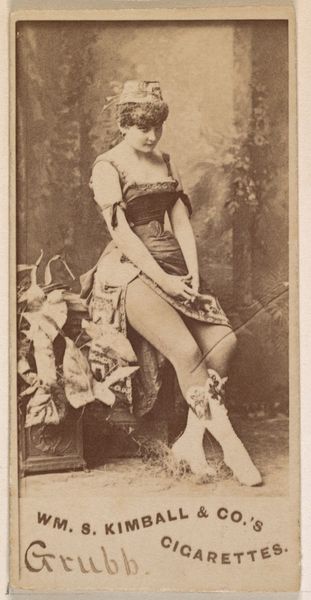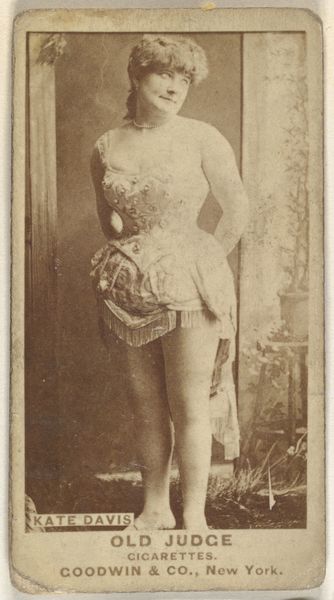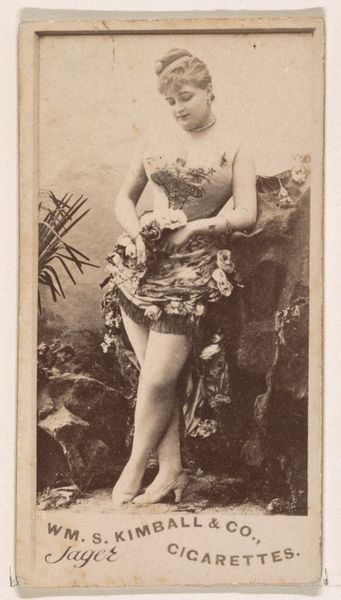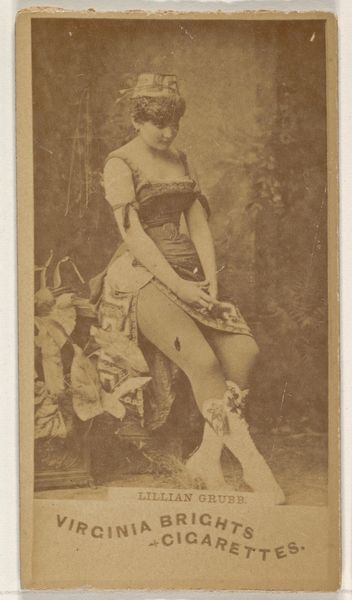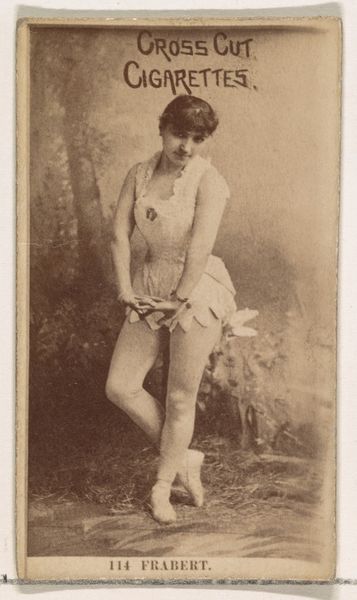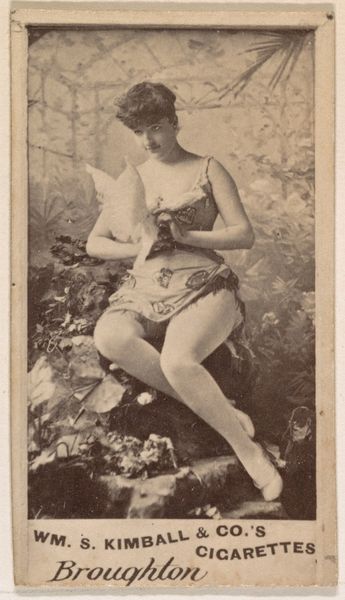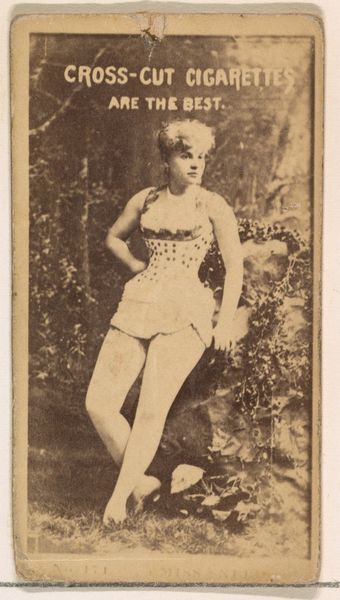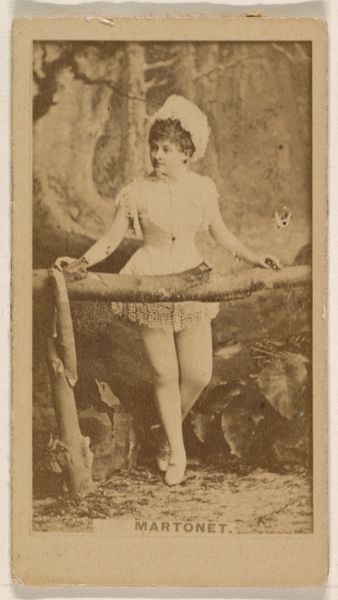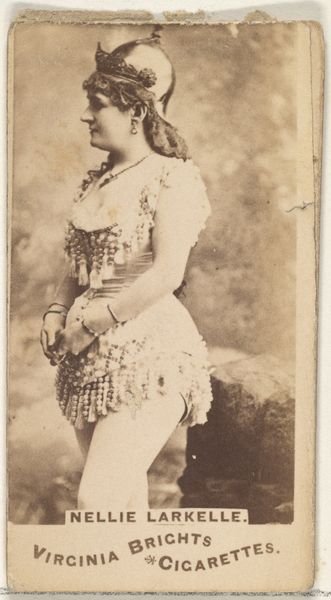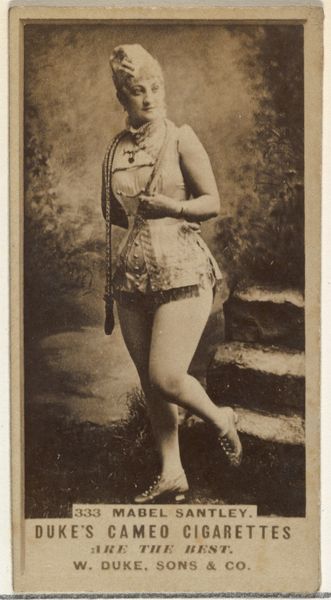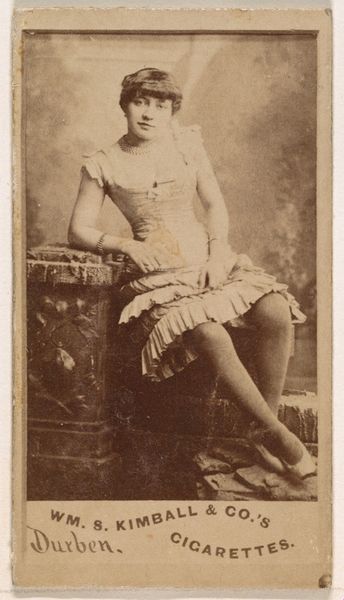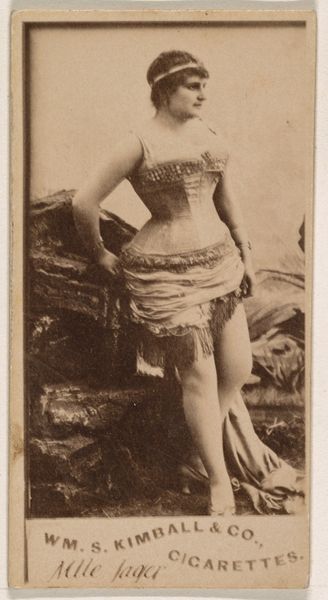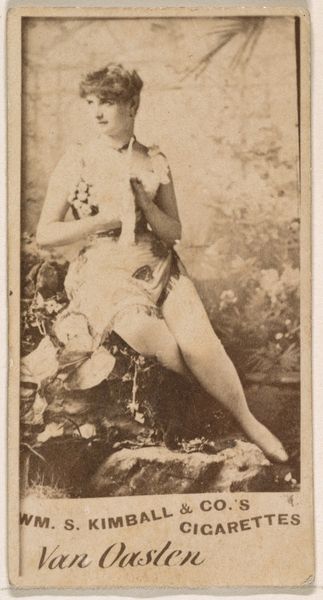
Minnie Ward, from the Actors and Actresses series (N171) for Old Judge Cigarettes 1886 - 1890
0:00
0:00
drawing, print, photography
#
portrait
#
drawing
# print
#
photography
#
nude
Dimensions: sheet: 2 11/16 x 1 3/8 in. (6.9 x 3.5 cm)
Copyright: Public Domain
Editor: Here we have "Minnie Ward, from the Actors and Actresses series" created between 1886 and 1890 by Goodwin & Company. It’s a small photograph, originally printed for Old Judge Cigarettes. It's surprising to see a figure like this associated with tobacco, almost dreamlike... What are your thoughts? Curator: Well, immediately I'm drawn to the commodification inherent in this image. This photograph, initially intended as a promotional item for cigarettes, speaks volumes about the intertwining of art, advertising, and the emerging consumer culture of the late 19th century. We see the "actress" not just as a person, but as a symbol for sale. Editor: So it's less about the artistic merit and more about how it functions in society? Curator: Exactly. Consider the materials: mass-produced photographs meant to be collected, traded, and ultimately discarded with the cigarette packaging. The photographic process itself allowed for reproduction on a scale never before seen, cheapening the image, and widely distributing what was once, maybe, considered precious. Does that cheapening affect how the culture treats women, would you say? Editor: I never thought of it that way. The mass production certainly diminishes any preciousness. It makes it clear that this image isn't primarily for artistic appreciation, it's for promotion. Curator: And think about the labor involved. From the photographers capturing the image to the factory workers churning out these cards, all contribute to a complex web of production. The photograph isn't just an image; it's a product of industrial capitalism, feeding a desire fueled by carefully constructed iconography. Editor: It changes how I see it entirely. Instead of a pretty image, I see a cog in a larger machine. Curator: Precisely! Looking at art through this lens helps us understand not just what we’re seeing, but *why* it was made and *how* it was used within the socio-economic landscape of its time. Editor: I’m walking away with a whole new way to look at these kinds of portraits, considering production just as much as aesthetics.
Comments
No comments
Be the first to comment and join the conversation on the ultimate creative platform.
